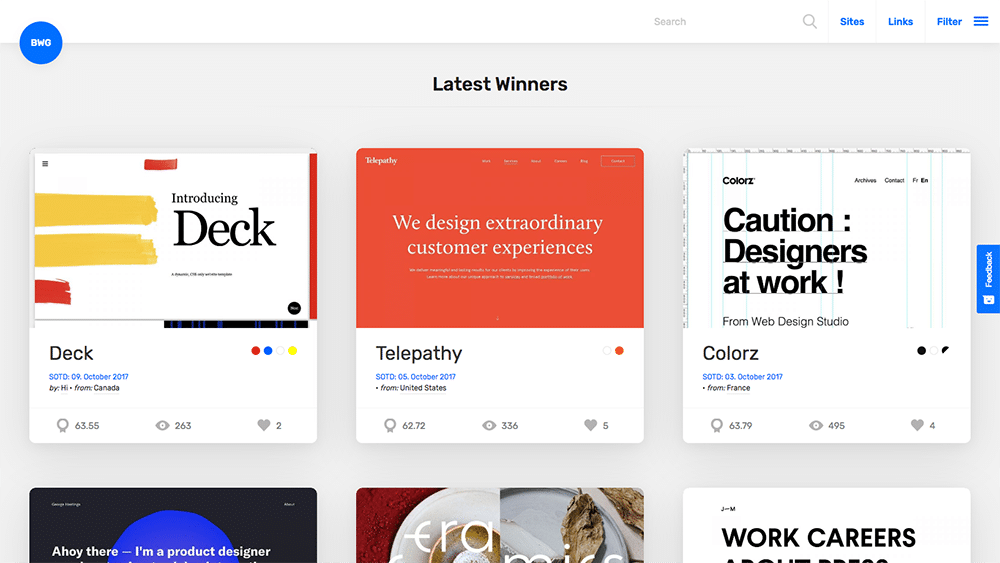Website Design in Singapore: Building Interactive Sites for Your Visitors
Website Design in Singapore: Building Interactive Sites for Your Visitors
Blog Article
Top Trends in Site Layout: What You Required to Know
Minimalism, dark setting, and mobile-first methods are among the key styles shaping modern layout, each offering distinct advantages in individual involvement and performance. In addition, the emphasis on access and inclusivity emphasizes the relevance of developing digital settings that provide to all customers.
Minimalist Style Looks
In recent times, minimalist design aesthetics have actually become a leading fad in website design, stressing simplicity and performance. This technique focuses on crucial content and removes unneeded aspects, thus improving user experience. By focusing on tidy lines, adequate white space, and a restricted shade palette, minimal designs help with simpler navigation and quicker tons times, which are crucial in retaining customers' focus.
The efficiency of minimalist design hinges on its capability to share messages plainly and directly. This quality fosters an instinctive interface, permitting customers to attain their goals with marginal interruption. Typography plays a considerable duty in minimal design, as the selection of font can stimulate specific emotions and lead the user's trip with the web content. The critical usage of visuals, such as premium photos or refined animations, can improve customer involvement without frustrating the general aesthetic.
As electronic spaces continue to advance, the minimalist layout principle remains pertinent, dealing with a diverse audience. Companies adopting this trend are usually perceived as modern and user-centric, which can dramatically influence brand understanding in a significantly competitive market. Inevitably, minimalist design aesthetics supply an effective solution for efficient and attractive website experiences.
Dark Setting Popularity
Accepting an expanding fad among individuals, dark mode has actually obtained significant popularity in website layout and application interfaces. This layout approach includes a primarily dark shade palette, which not only improves aesthetic appeal but also reduces eye stress, particularly in low-light settings. Users significantly appreciate the comfort that dark setting provides, bring about longer engagement times and an even more satisfying surfing experience.
The fostering of dark setting is likewise driven by its viewed benefits for battery life on OLED displays, where dark pixels consume much less power. This useful benefit, combined with the trendy, modern look that dark themes provide, has led many designers to integrate dark setting choices into their tasks.
In addition, dark mode can develop a sense of deepness and emphasis, accentuating crucial elements of an internet site or application. web design company singapore. Consequently, brands leveraging dark setting can improve user communication and produce a distinct identity in a congested marketplace. With the fad remaining to rise, integrating dark setting right into website design is ending up being not just a preference yet a conventional expectation amongst individuals, making it necessary for developers and designers alike to consider this aspect in their tasks
Interactive and Immersive Components
Often, designers are including interactive and immersive aspects into web sites to improve individual involvement and produce unforgettable experiences. This pattern reacts to the raising assumption from users for more vibrant and tailored interactions. By leveraging features such as animations, video clips, and 3D graphics, internet sites can attract customers in, cultivating a deeper connection with the content.
Interactive website creation singapore aspects, such as quizzes, surveys, and gamified experiences, urge site visitors to proactively take part instead of passively take in details. This engagement not just maintains users on the website much longer yet also enhances the chance of conversions. In addition, immersive modern technologies like digital fact (VR) and augmented fact (AR) offer special chances for businesses to display product or services in a much more compelling manner.
The incorporation of micro-interactions-- little, refined computer animations that respond to user actions-- likewise plays an important role in enhancing use. These communications provide feedback, improve navigating, and create a sense of fulfillment upon conclusion of jobs. As the electronic landscape proceeds to evolve, using interactive and immersive aspects will certainly continue to be a substantial emphasis for developers intending to create engaging and effective online experiences.
Mobile-First Approach
As the prevalence of mobile phones remains to surge, adopting a mobile-first approach has become important for web designers aiming to enhance individual experience. This technique highlights developing for smart phones before scaling up to larger screens, ensuring that the core performance and content come on one of the most frequently used platform.
Among the key benefits of a mobile-first method is boosted efficiency. By concentrating on mobile design, websites are structured, minimizing tons times and improving navigation. This is particularly crucial as users anticipate quick and responsive experiences on their smart devices and tablet computers.

Ease Of Access and Inclusivity
In today's digital landscape, guaranteeing that sites are accessible and comprehensive is not just a best technique yet an essential demand for reaching a varied audience. As the net continues to function as a primary methods of interaction and commerce, it is necessary to acknowledge the varied demands of customers, including those with disabilities.
To attain true access, web developers have to stick to developed guidelines, such as the Internet Content Access Guidelines (WCAG) These standards emphasize the relevance of offering message alternatives for non-text web content, guaranteeing key-board navigability, and maintaining a rational content structure. In addition, inclusive style techniques extend beyond conformity; they entail creating an individual experience that suits numerous capabilities and choices.
Including functions such as adjustable text sizes, shade comparison options, and screen visitor compatibility not just boosts usability for people with impairments however likewise improves the experience for all customers. Ultimately, prioritizing availability and inclusivity fosters a much more fair electronic setting, urging more comprehensive engagement and engagement. As services significantly identify the ethical and financial imperatives of inclusivity, incorporating these concepts right into website layout will certainly come to be an important element of successful online techniques.
Final Thought

Report this page